March 8, 2021
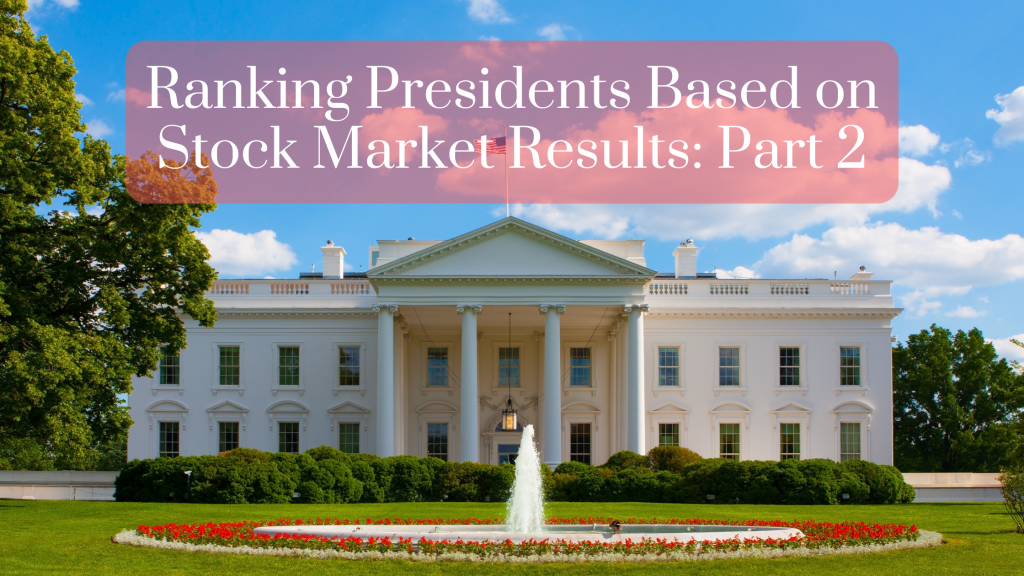
Every four years, Washington D.C. and Wall Street converge as Americans elect a president and Wall Street tries to figure out what the outcome means for the stock and bond markets. And since so many hypotheses on this topic abound, it’s hard to keep track of them all.
For example, there are those who believe stock have better results when:
- A president is re-elected to a second term;
- A new president from a different party is elected; or
- There is a Republican/Democrat president.
But what if we ranked the presidents simply by the results of the main stock market indexes, the Dow Jones Industrial Average (DOW) and the S&P 500? Surely that would settle the debate as to which president was best for investors, right? Before we begin, there are a few big caveats to consider.
The Five Big Caveats
Caveat #1: Since the Office of the President was established in 1789, America has had 45 different presidents. And just three years later, Wall Street was officially founded on May 17, 1792 with the signing of the Buttonwood Agreement. But for the most part, there really was no stock market until the late 1800s, meaning it doesn’t make sense to include the first 22 presidents. This analysis starts with the election of 1888.
Caveat #2. The Dow Jones Industrial Average was first published on May 26, 1896 and it followed the 12 largest companies in each sector. Today, it tracks 30 companies. The other very commonly-used index – the S&P 500 – although introduced in 1957 it does track data back to the late 1920s. Our series uses the S&P 500 from President Hoover to the present, and the DOW for earlier.
Caveat #3. Results do not include dividends. Over the last few decades, dividends have become a smaller component of total returns, so not including dividends will tend to favor more recent presidents.
Caveat #4. Data is not adjusted for inflation. This will tend to help presidents of inflationary times (Carter and Ford) and hurt presidents of deflationary times (Hoover and Bush).
Part I: #1 – #4
Part I brought us this list:
#1: President Herbert Hoover (-30.8% per year)
#2: President George W. Bush (-5.6% per year)
#3: President Grover Cleveland (-4.9% per year)
#4: President Richard Nixon (-3.9% per year)
Ranking from Last to First (#5 – #8)
#5 of 23
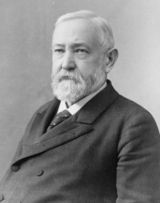
President Benjamin Harrison, Republican
- Market Results: -1.4% per year
- Term: March 4, 1889 – March 4, 1893
- Election Year: 1888
President Benjamin Harrison was the grandson of President William Henry Harrison, which makes those two the only grandfather-grandson pair to have lived in the White House.
Under President Harrison’s watch, the federal budget passed the $1 billion threshold (today it is about $4.8 trillion).
He also helped pass the McKinley Tariff, which imposed historical trade tariffs, as well as the Sherman Antitrust Act.
#6 of 23
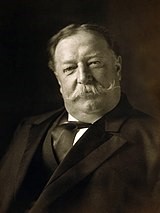
President William Howard Taft, Republican
- Market Results: -0.1% per year
- Term: March 4, 1909 – March 4, 1913
- Election Year: 1908
President Taft was another one-term president. And, besides his interesting mustache, Taft was the only person to ever serve as president and Chief Justice of the Supreme Court.
President Taft pushed for more businesses to be broken up through lawsuits brought under the Sherman Antitrust Act, including suits against Standard Oil, American Tobacco and U.S. Steel.
#7 of 23
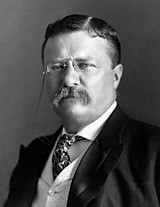
President Theodore Roosevelt, Republican
- Market Results: 2.2% per year
- Term: Sept. 14, 1901 – March 4, 1909
- Election Year: 1900 and 1904
Teddy Roosevelt became the youngest president ever after President McKinley was assassinated.
One of America’s more colorful presidents, Roosevelt could also be confrontational and controversial as he fully embraced his cowboy, Rough Rider brand whenever he could.
President Roosevelt also continued breaking up companies by bringing lawsuits under the Sherman Antitrust Act and helped launch the Department of Commerce and Labor.
#8 of 23
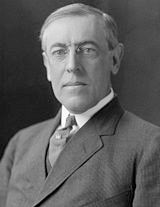
President Woodrow Wilson, Democrat
- Market Results: 3.1% per year
- Term: March 4, 1913 – March 4, 1921
- Election Year: 1912 and 1916
President Woodrow Wilson accomplished a lot during his two terms, including bringing back federal income taxes, creating a division which eventually became the Internal Revenue Service and introducing the Federal Reserve System.
In addition, on April 2, 1917, Wilson led the country into World War I when he asked Congress for a declaration of war against Germany, arguing that Germany was engaged in “nothing less than war against the government and people of the United States.”
Part III
Next month will bring Part III and the list will include a few presidents that you likely know much more about. Including a peanut-farmer turned president.
Important Disclosures
All information is believed to be from reliable sources; however, LPL Financial makes no representation as to its completeness or accuracy.
The Standard & Poor’s 500 Index is a capitalization-weighted index of 500 stocks designed to measure performance of the broad domestic economy through changes in the aggregate market value of 500 stocks representing all major industries.
The Dow Jones Industrial Average Index is comprised of U.S.-listed stocks of companies that produce other (non-transportation and non-utility) goods and services. The Dow Jones Industrial Averages are maintained by editors of The Wall Street Journal. While the stock selection process is somewhat subjective, a stock typically is added only if the company has an excellent reputation, demonstrates sustained growth, is of interest to a large number of investors and accurately represents the market sectors covered by the average. The Dow Jones averages are unique in that they are price weighted; therefore their component weightings are affected only by changes in the stocks’ prices.
1LPL Research, FactSet 1/19/21
This article was published by RSW Publishing.
VIEW OUR Business Continuity Plan
CFP® Certified Financial Planner™ Certified Financial Planner Board of Standards, Inc. owns the certification marks above, which it awards to individuals who successfully complete initial and ongoing certification requirements.
Securities and advisory services offered through LPL Financial, a Registered Investment Advisor Member FINRA + SIPC.
The LPL Financial registered representative associated with this site may only discuss and/or transact securities business with residents of the Following states: NC, VA, SC, MD, DE and FL.
Financial planning services offered through LPL Financial, a registered investment advisor